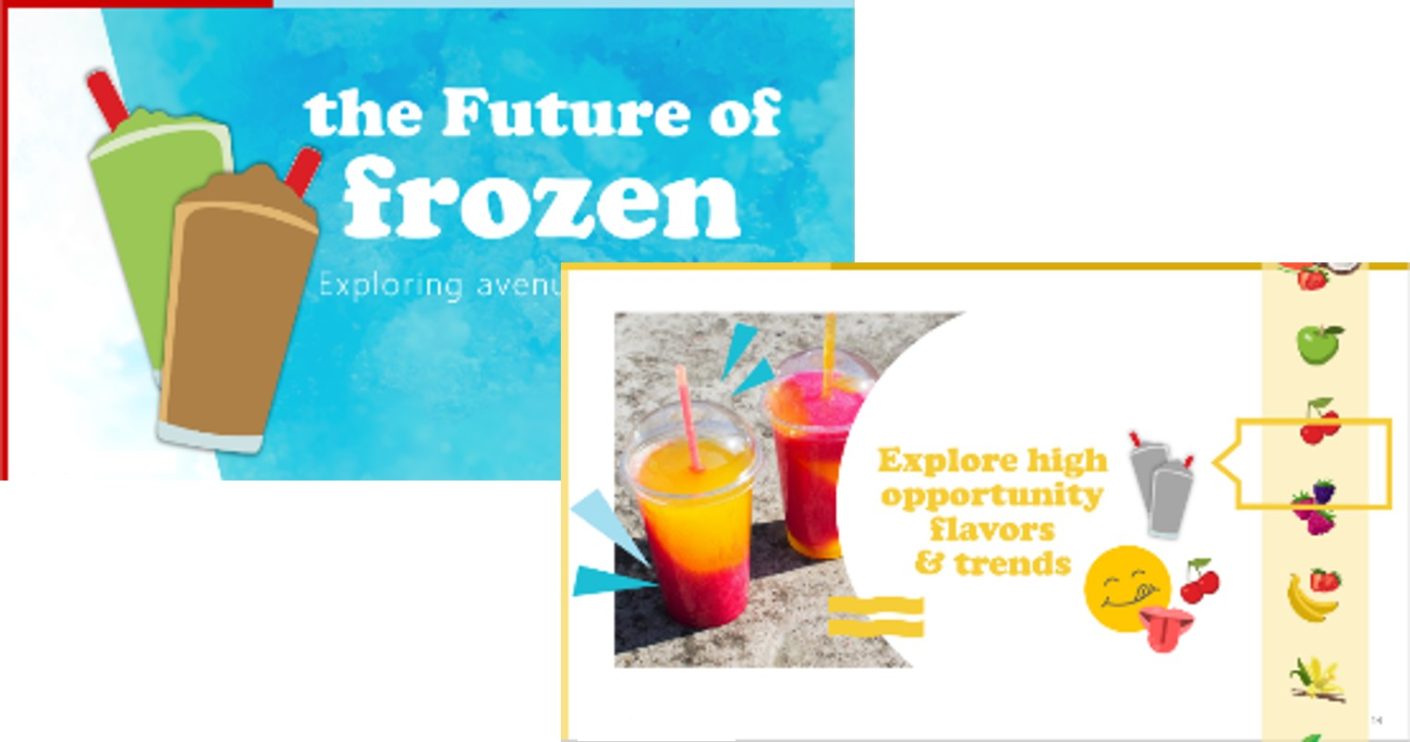Supercharge your research with four activation sparks
How small sparks in insight activation are a powerful way to drive action and impact.


Lisa McFarland
16 November 2023
5 min read
Great things can come from seemingly small sparks. Just think about how that chat in the coffee corner inspired you to finish the report you were stuck on. Or how one consumer quote sparked the idea for a groundbreaking campaign. Insight activation is all about how we can bridge the gap between insights and strategy, but sometimes all it takes is a subtle spark to drive action. In this blog we share four activation sparks to supercharge your research.
1. Rethink the deliverable
It’s about what you share, to whom and how. The days of presenting long and winding research reports are gone. We need to shift from deliverables that try to include everything for everyone. It’s about creating a holistic story while tailoring bite-size communications for our diverse audiences. Here are ideas for such tailored pieces:
- Instead of the traditional 100-slide presentation, focus on around 20 slides with power facts and curate your story through visually impactful key slides.
- Add an executive summary tailored to the needs of each audience, providing not only their perspective, but also offering a broader context.
- Complement your deck with the power of infographics, transforming your story into a visually engaging, easily digestible format for a more memorable experience.
- Transform a share-out meeting into an interactive working session where the audience can immediately make commitments for small next steps.
- Use video to bring consumers to life, influencing in a more compelling way. Depending on your intent, choose a 60-second energizing sizzle reel, a 4-minute explainer video or even an 8-minute documentary story, as we did for a leading beverage brand.
An example were we smartly re-thought our deliverables was when we built activation into an A&U study from the start. Our client wanted to show up as a thought leader with its retail partner to plan the next year. To elevate the relationship from a traditional research share-out with lots of data – and save time and money – we changed out the research report for a ready-to-share presentation organised around actionable innovation spaces. We added secondary research to add category trends insights and small nods throughout the deck to this retailer’s goals to ensure relevancy. Showing up with content that married the consumer, the market and the retailer’s business elevated the conversation and partnership. We also added a worksheet to complement the presentation and fuel in-the-moment individual evaluation.

2. Sprinkle in thought starters
When sharing knowledge, you shouldn’t stick to the here and now, but already glimpse into the future by including thought starters to spark the next step. For example:
- What will stand in our team’s way from making this happen?
- Do we have any other information to fill gaps in knowledge?
- What has worked well in the past and what has not?
- Do our current solutions fit with what we just learned or do we need to stop, go faster or pivot?
Thought starters are a way to increase the relevance of what has been shared and start conversations about next steps. These questions or statements should have a clear purpose, like challenging a dominant perspective or fuelling creative thinking, and can be shared in many forms – as a question at the end of a presentation, as e-mail follow-up, or through an inspirational example.
It’s important to keep in mind that quality is more important than quantity. One spot-on, challenging thought starter will have more impact than five mediocre ones. To take it further, go beyond consumer insights and think about trends, hypothesised future scenarios, the competition, potential internal roadblocks or what has worked in the past. It’s a pitfall to only stick to the consumer perspective, as true action comes from multi-functional collaboration that prioritises the actions best for the organization.
3. Showcase opportunity areas
While thought starters serve as a first nudge to start thinking about next steps, showcasing opportunity might be needed to truly drive action. Imagine changing a story from sharing the five biggest consumer needs to five opportunity areas for the business to capture consumers’ hearts. Or even better, opportunity areas that were vetted through stakeholder alignment; so they come from the consumer, but are prioritised for relevancy. That switch in how we package knowledge immediately changes the conversation from education to action. Or in the context of trends, going beyond merely sharing the content, to plotting the trends on a framework in the buckets ‘now, new, next’, using a scorecard to determine where the organization should be spending efforts. Remember, how we package our message absolutely matters for the outcome we want to achieve.
One of our clients in the food sector wanted to gain a better understanding of the delivery journey from the customer’s perspective. By curating existing knowledge and conducting new research, we uncovered opportunity areas to improve the customer experience (CX). Video reviews from customers brought to life what works today, what doesn’t and suggested potential improvements. We then refined the opportunities to match this with the brand’s equity and CX priorities. Engaging a cross-functional team, we ideated solutions for our opportunity spaces. To ensure real-world applicability, customers from our research were invited to the session to evaluate ideas and refine the best ones. One idea was even set in motion that day.
4. Make share-outs more engaging
A relatively easy, but often overlooked activation spark is making share-outs more engaging. This starts with preparation. Instead of a standard invite, why not include a short audio introduction or some power facts as a teaser? Elevate the experience by proactively inviting ‘champions’ – people with an interesting perspective – to enrich the discussion. Creating worksheets for people to fill in during the meeting – collectable at the end – is another way to boost engagement.
During the share-out, ask everyone to turn on their cameras at the start of a virtual meeting, assign someone to document follow-ups, and take down slides to show faces when you want discussion. If looking at a new product or service, pull up a competitor website. Looking into their offerings and communication adds depth to the conversation and might spark new ideas on how to improve or differentiate.
After the meeting, it’s essential to incorporate the notes into the presentation deck to make it immediately more actionable, or even create a one-page follow-up note. We also like to send at least two follow-up messages to attendees over the next few months. These may include new relevant information, a success story, a reminder of commitments discussed in the meeting, or a request for feedback. It’s about keeping the momentum going strong so people don’t forget.
Small activation sparks can create big impact. By rethinking your deliverables, sprinkling in thought starters, showcasing opportunity areas and making share-puts more engaging you can supercharge your research and drive action.
Need help with these activation sparks?
Let’s connect